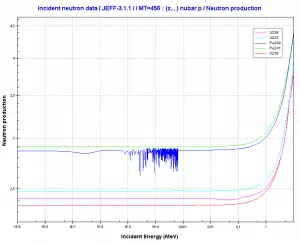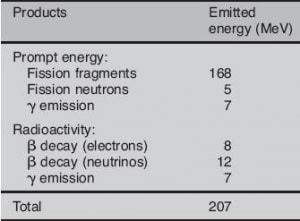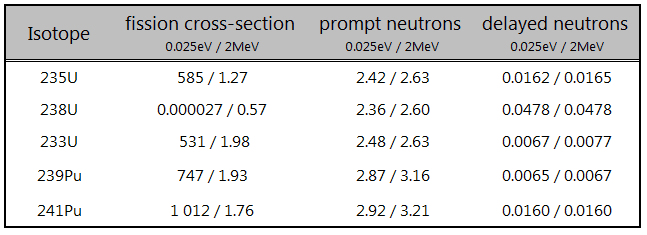Prompt Neutrons
Prompt fission neutrons and prompt gamma rays are emitted when excited primary fission fragments release their energy to reach a more stable configuration. This happens shortly after the fission of the nucleus on two fission fragments. Studying prompt neutrons and gamma rays is important for deepening our understanding of the nuclear fission process and core design calculations or radiation shielding calculations.
Most of the neutrons produced in fission are prompt neutrons. Usually, more than 99 percent of the fission neutrons are prompt neutrons. Still, the exact fraction is dependent on the nuclide to be fissioned and is also dependent on an incident neutron energy (usually increases with energy). For example, fission of 235U by thermal neutron yields 2.43 neutrons, of which 2.42 neutrons are the prompt neutrons, and 0.01585 neutrons (0.01585/2.43=0.0065=ß) are the delayed neutrons. The production of prompt neutrons slightly increases with incident neutron energy.
Prompt neutrons are emitted within 10-14 seconds. This is very important because it is very fast and causes a fast response of the reactor power in case of prompt criticality. Therefore nuclear reactors must operate in a prompt subcritical, delayed critical condition. All power reactors are designed to operate in delayed critical conditions and are provided with safety systems to prevent them from ever achieving prompt criticality.
The reactor’s response on the reactivity insertion is determined by a neutron generation time (not by emission time), which is the average time from a prompt neutron emission to a capture that results only in fission.


